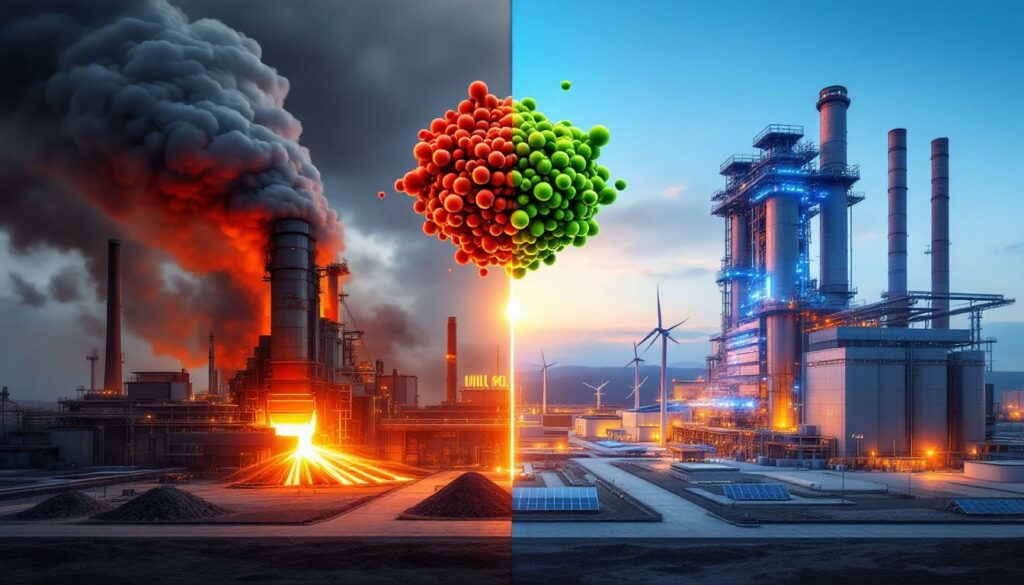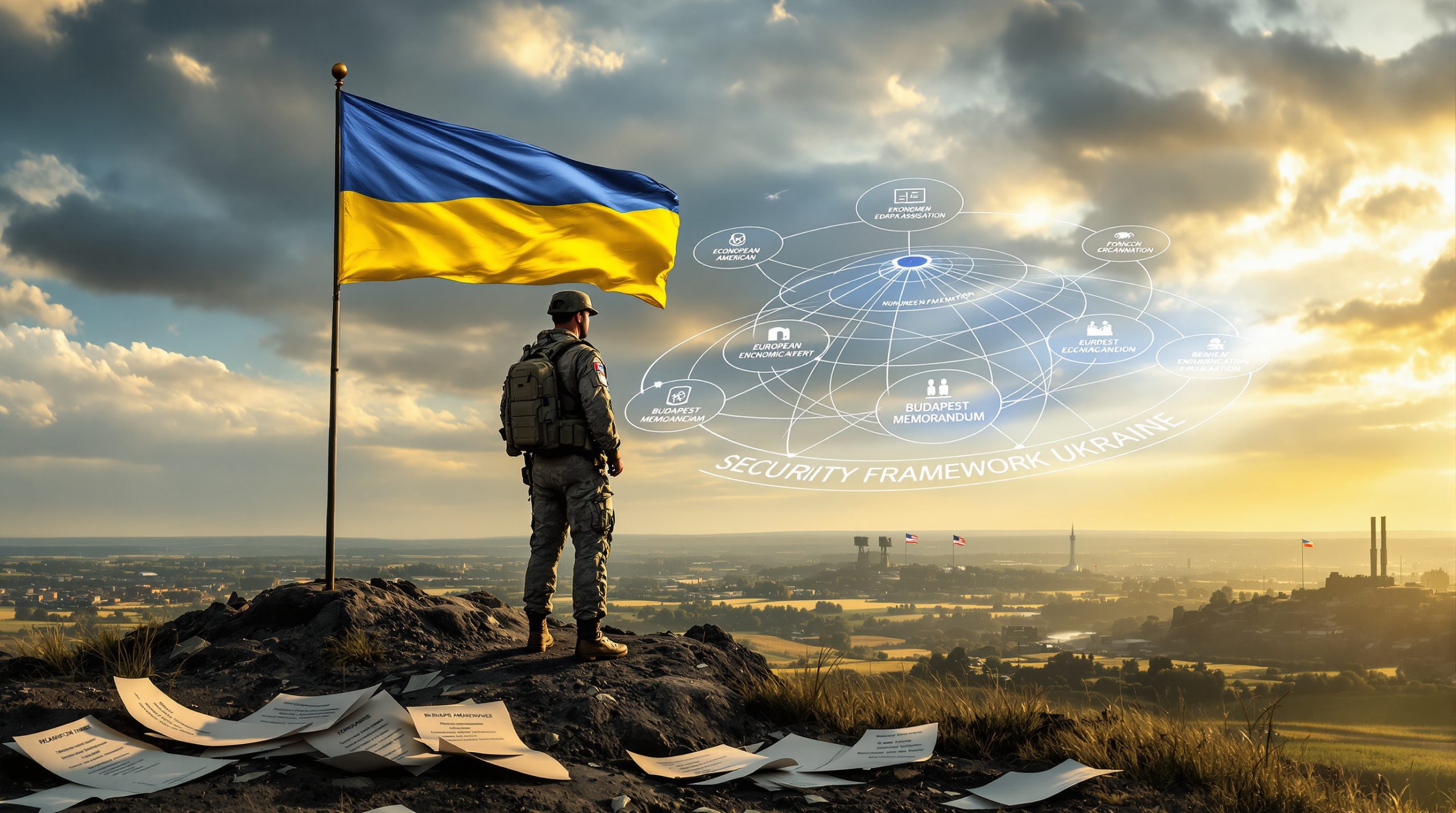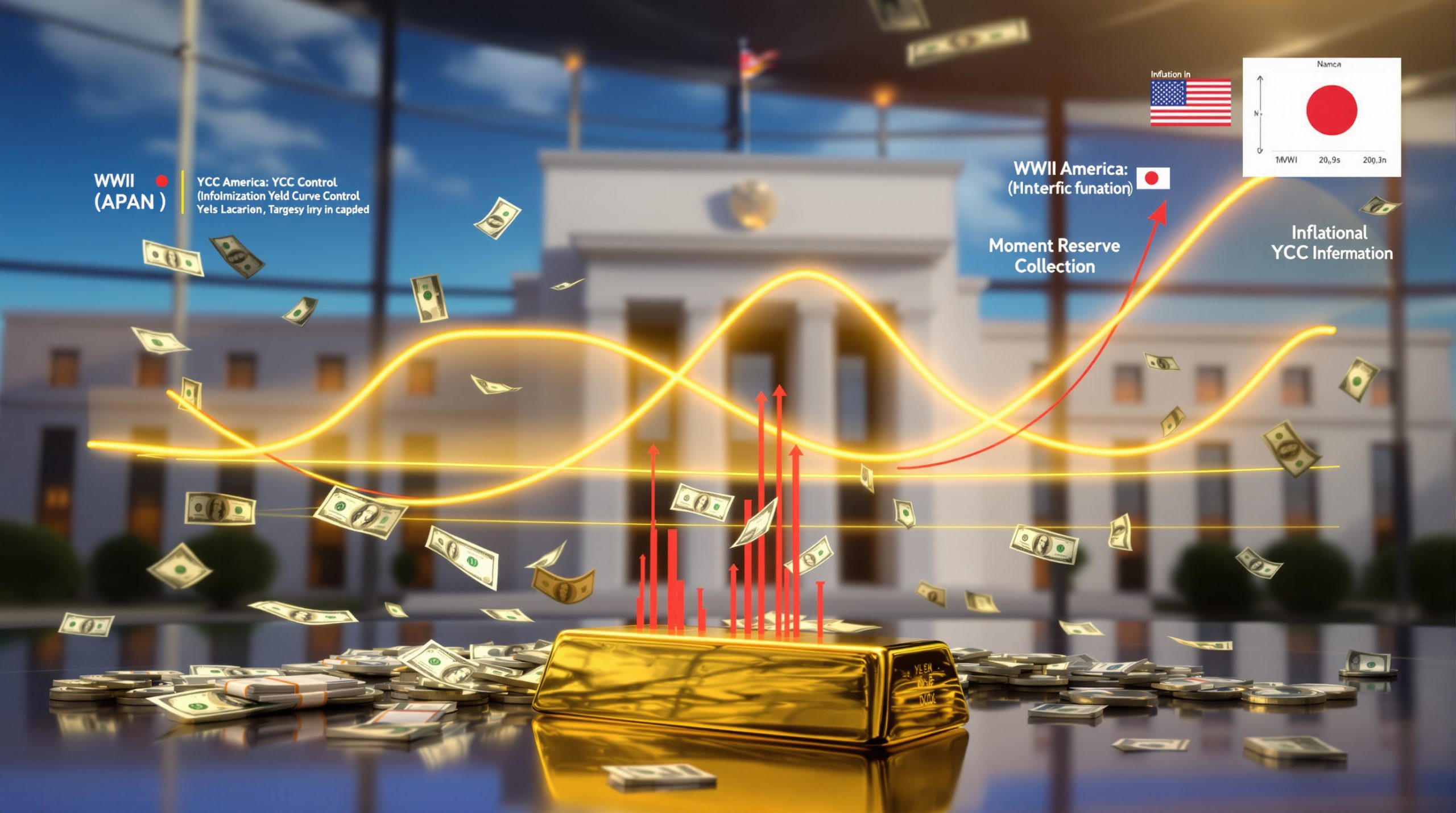Understanding Carbon Intensity in Steel Production: A Critical Industry Challenge
Carbon intensity in steel production measures the amount of carbon dioxide (CO2) emitted during manufacturing processes, typically calculated in kilograms or tonnes of CO2 per tonne of steel produced. This metric has become crucial as the global steel industry—responsible for approximately 8% of worldwide CO2 emissions—faces mounting pressure to reduce its environmental footprint.
The concept encompasses both direct emissions from steelmaking operations (Scope 1) and indirect emissions from purchased electricity and heat (Scope 2). For comprehensive environmental assessment, many organizations now also include value chain emissions (Scope 3).
According to the latest industry benchmarks, global average carbon intensity stands at approximately 1.85 tonnes CO2 per tonne of steel, with European producers achieving slightly better performance at around 1.7 tonnes CO2 per tonne. These measurements increasingly follow standardized protocols like ISO 20915:2024, ensuring consistent reporting across the industry.
As climate regulations tighten, particularly in Europe under the EU's Carbon Border Adjustment Mechanism (CBAM), carbon intensity has evolved from an environmental concern to a critical business metric affecting competitiveness, market access, and financial performance.
How Do Different Steel Production Methods Compare in Carbon Emissions?
Steel production follows two primary routes with dramatically different carbon footprints: the traditional Blast Furnace-Basic Oxygen Furnace (BF-BOF) method and the Electric Arc Furnace (EAF) approach. Understanding these differences is fundamental to addressing carbon intensity in steel production.
BF-BOF vs. EAF Production Routes
These production methods differ significantly in both process and environmental impact:
| Production Method | Carbon Emissions | Water Consumption | Material Yield | Primary Inputs |
|---|---|---|---|---|
| BF-BOF | 2.0-2.2 tonnes CO₂/tonne | 2.1m³/tonne | 87% | Iron ore, coal, limestone |
| EAF | <0.5 tonnes CO₂/tonne | 0.5m³/tonne | 93% | Steel scrap, electricity |
The BF-BOF route relies on coal-based reduction of iron ore in blast furnaces, followed by oxygen injection to reduce carbon content in basic oxygen furnaces. This coal dependency creates unavoidably high carbon emissions.
In contrast, EAF technology melts recycled steel scrap using electrical energy, circumventing much of the carbon-intensive ironmaking process. As Alexander Gordienko, export director at Spanish steelmaker Celsa Group, notes: "EAFs are inherently less carbon-intensive but suffer from an energy inefficiency paradox that complicates their economic equation."
Current Production Distribution in Europe
European steel production currently reflects a balance between these technologies:
- BF-BOF route: Accounts for approximately 55% of European steel production
- EAF route: Represents around 45% of European steel production
This distribution is shifting as decarbonisation benefits accelerate. According to the EU Net-Zero Roadmap, EAF production is expected to increase to approximately 57% of European steel output by 2050, with BF-BOF declining to 43% as carbon pricing pressures intensify.
The transition faces significant hurdles, however, including capital costs exceeding €1 billion per plant conversion and technical challenges in producing certain high-quality steel grades through the EAF route.
What Defines "Green Steel" in Today's Market?
The concept of "green steel" lacks universal definition, with standards evolving rapidly as technology advances and climate targets tighten. This moving target creates both challenges and opportunities for producers and buyers navigating the decarbonization landscape.
Evolving Emissions Thresholds
Industry benchmarks for green steel certification have become increasingly stringent:
- 2024 threshold: Below 500 kg CO2 per tonne of steel
- Current threshold (2025): Below 400 kg CO2 per tonne of steel
- Projected 2026 threshold: Potentially below 300 kg CO2 per tonne of steel
These accelerating requirements reflect growing climate urgency and technological advancement. According to Gordienko, "What qualified as green steel just six months ago no longer meets the standard today, forcing continuous improvement in production processes."
While green steel currently represents less than 5% of European production, capacity is expanding rapidly, with multiple projects targeting commercial-scale low-carbon production by 2030.
Industry Benchmarks and Certification Standards
Several frameworks have emerged to quantify and certify green steel claims:
- Fastmarkets' green steel definition: Steel produced with combined Scope 1, 2 & 3 emissions at or below 500 kg CO2 per tonne
- ResponsibleSteel certification: Requires emissions below 450 kg CO2/tonne plus social and governance criteria
- TÜV SÜD green steel standard: Establishes three tiers of certification based on emissions intensity
Market indicators show growing commercial recognition for these standards. Fastmarkets' price assessment found green steel commanding a premium of €15-30 ($17-34) per tonne for rebar in Northern Europe (assessment reference: MB-STE-0926).
Environmental Product Declarations (EPDs) have become mandatory for steel products in European public tenders, creating transparency that enables buyers to compare carbon footprints across suppliers and make informed purchasing decisions.
Why Are EAF Steelmakers Facing Unique Challenges?
Despite their lower carbon footprint, Electric Arc Furnace operators face distinctive obstacles to profitability and further decarbonization. These challenges stem from energy economics and regional competitive disadvantages.
Energy Efficiency Paradox
EAF production presents an environmental paradox: while producing far less carbon, it consumes substantially more energy per tonne of steel:
- EAF energy consumption: Approximately 0.45 MWh per tonne of steel
- BF-BOF energy consumption: Approximately 0.05 MWh per tonne of steel
This 9-fold difference in energy intensity creates technical challenges in power factor management and reactive power compensation. Modern EAFs incorporate energy recovery systems that capture and reuse waste heat, but these add significant capital costs and complexity.
Italian EAF producers illustrated this vulnerability during the 2023 energy price spikes, when several mills implemented temporary shutdowns as electricity costs made production economically unfeasible.
Electricity Cost Pressures
European EAF producers face particularly acute electricity cost pressures that threaten their competitiveness:
- Price volatility: European electricity prices fluctuate dramatically, from €20-30 per MWh to €200 per MWh during peak demand
- Production cost impact: These fluctuations can add up to €70 per tonne in additional steel production costs
- Regional disadvantage: European industrial electricity rates (often exceeding €100 per MWh) are significantly higher than in competing regions like the US and China (€30-50 per MWh)
Gordienko emphasizes this competitive disadvantage: "European EAFs pay three times what U.S. producers do for electricity—and CBAM alone cannot offset this structural disadvantage."
Long-term renewable Power Purchase Agreements (PPAs) offer some stability, but at €65-80/MWh for typical 10-year contracts, they still exceed international competitor costs substantially.
How Does Raw Material Supply Impact EAF Decarbonization?
Raw material supply represents another critical challenge for EAF decarbonization efforts. Scrap availability, quality, and pricing significantly influence both carbon footprint and production economics.
Scrap Availability Constraints
The European scrap market faces growing supply-demand imbalance:
| Material | Current European Supply | Projected 2030 Demand | Supply Gap |
|---|---|---|---|
| Total scrap | 100 million tonnes/year | 120 million tonnes/year | 20 million tonnes |
| Low-copper scrap | 1 million tonnes/year | 15 million tonnes/year | 14 million tonnes (93% deficit) |
This gap is exacerbated by substantial exports—approximately 20% of European scrap (20 million tonnes annually) leaves the region, often at lower prices than domestic market rates. Turkish importers, for instance, typically pay about $435/tonne (June 2025), compared to European domestic prices of $480/tonne.
This export-driven scarcity adds €20-40 per tonne to European steel production costs, further eroding competitiveness. As Gordienko notes, "We're exporting our environmental advantage while importing carbon-intensive products."
Premium Scrap Requirements
For specialized applications, particularly flat steel products, specific high-quality scrap is essential:
- Low-copper scrap demand: Critical for avoiding surface defects in sheet steel
- Copper tolerance: Maximum 0.15% for automotive-grade sheet versus 0.4% for structural products
- Sorting technology: Current optical sorting achieves only 80% efficiency in copper removal
With 40-50 million tonnes of new green iron production capacity expected in Europe by 2030, premium scrap constraints present a significant bottleneck. Investment in advanced scrap processing technology—including laser-induced breakdown spectroscopy and automated separation systems—requires approximately €3 billion in infrastructure investment across the European sector.
What Policy Support Exists for EAF Decarbonization?
Despite their inherent carbon advantages, EAF producers have received disproportionately little policy support for further decarbonization, creating tensions within the broader industry innovation trends.
Funding Disparities
Public funding for steel decarbonization shows dramatic imbalance between production routes:
- Total green steel transition funding: Estimated at over €14 billion by end of 2024
- Distribution imbalance: Approximately 80% of public funding directed to BF-BOF projects
- EAF support: Virtually no funding for existing EAF steelmakers, with limited support only for new facilities
This disparity appears in stark contrast to carbon abatement potential. As Gordienko observes: "Zero support exists for operational EAF upgrades while new 'green' BF projects receive billions, despite EAFs already delivering lower emissions today."
The Swedish HYBRIT project exemplifies this trend, receiving a €500 million state aid grant for hydrogen-based ironmaking—a technology that aims to approach emission levels EAFs already achieve.
Policy Requests from EAF Producers
European EAF steelmakers have articulated specific policy needs to address their decarbonization challenges:
- Fixed renewable power tariffs: Linked to the Emissions Trading System (ETS) price to create predictable energy costs
- Scrap export controls: Potential tariffs or restrictions on EU-origin ferrous scrap exports to secure domestic supply
- Infrastructure investment: Dedicated €3 billion fund for developing premium scrap processing capabilities
These requests face opposition from scrap traders and some policymakers concerned about market intervention. However, they align with the EU's Critical Minerals Act, which increasingly recognizes recycled materials as strategic resources for industrial competitiveness.
How Can the Grid's Carbon Intensity Impact Steel Emissions?
The carbon intensity of electricity grids directly affects EAF steel emissions, creating both challenges and opportunities as Europe's energy transition progresses.
Renewable Energy Integration
The relationship between grid decarbonization and steel emissions is direct and significant:
- Emissions reduction potential: Every 10% improvement in grid "greenness" reduces steel EPD (Environmental Product Declaration) emissions by approximately 50 kg CO2 per tonne
- Regional variations: Profound differences exist in grid carbon intensity across European countries—from Sweden's ultra-clean 23 kg CO2/MWh to Poland's coal-dependent 650 kg CO2/MWh
This creates complex competitive dynamics between steel producers in different countries. A Swedish EAF plant can produce steel with approximately 85% lower electricity-related emissions than an identical plant in Poland, even with identical efficiency.
New Renewable Fuel of Non-Biological Origin (RFNBO) regulations require hourly matching of renewable generation with consumption—a standard that few steel producers can currently meet due to 24/7 operational requirements.
On-site renewable generation offers partial solutions, though typical steel mill roof space limits solar potential to 5-10% of total electricity needs. Large-scale off-site PPAs remain the primary mechanism for securing low-carbon electricity.
A critical correlation exists between renewable penetration rates and EAF emissions intensity. Analysis shows diminishing returns beyond 80% renewable penetration unless seasonal storage solutions become economically viable.
What Are the Economic Implications of Carbon-Reduced Steel?
The transition to lower-carbon steel carries significant economic implications, affecting pricing, competitive positioning, and capital allocation decisions across the value chain.
Price Premiums and Market Dynamics
Green steel currently commands a market premium, though pricing remains volatile and regionally variable:
- Current premium range: €15-30 per tonne for green rebar in Northern Europe
- Contract structures: Premiums are typically structured as add-ons to base prices rather than separate products
- Customer segmentation: Automotive and construction sectors show highest willingness to pay for green credentials
Notable pricing examples include H2 Green Steel securing contracts at approximately €680/tonne versus conventional steel at €650/tonne, representing a 4.6% premium for near-zero carbon products.
Despite these premiums, European producers face significant competitive challenges. Even with CBAM implementation, high European electricity costs create a €40-70 per tonne disadvantage compared to imports from regions with lower energy prices and less stringent environmental regulations.
Lifecycle cost analysis reveals different economic trajectories for EAF versus BF-BOF assets. While EAF plants typically require lower initial capital (€600-800 million versus €2-3 billion for integrated mills), their economic performance is more sensitive to electricity and scrap prices. Twenty-year financial models show higher volatility in EAF margins despite lower average carbon compliance costs.
Green finance mechanisms, particularly sustainability-linked bonds, increasingly support sustainability transformation investments. These instruments typically offer 15-25 basis point reductions in interest costs when emissions reduction targets are met, improving project economics.
How Will Future Technology Impact Steel Decarbonization?
Technological innovation continues to reshape decarbonization pathways for steel production, with several promising approaches emerging to address current limitations.
Emerging Production Pathways
The European steel industry is pursuing multiple technological routes to further reduce carbon emissions:
- Hydrogen-based DRI (Direct Reduced Iron): Twelve major projects are under development across the EU (2025-2030), replacing natural gas with hydrogen as the reducing agent
- Hybrid EAF-DRI facilities: Eight million tonnes of annual capacity is expected by 2028, combining the advantages of both technologies
- Molten oxide electrolysis: Boston Metal's pilot results show potential for direct steel production from ore using electricity, eliminating the need for carbon reduction entirely
These technologies face significant implementation challenges. Hydrogen DRI requires extremely pure hydrogen (>99.97%) to avoid material degradation, and current electrolysis technology demands over 4.2 kWh per normal cubic meter of hydrogen produced.
Hybrid Approaches and Carbon Capture
Many producers are pursuing pragmatic hybrid approaches to navigate the transition period:
- EAF + DRI combination: Using varying proportions of scrap and direct reduced iron allows flexibility in raw material selection while maintaining quality
- Advanced scrap pre-processing: Enhanced sorting and preparation technologies improve scrap quality, with recent electromagnetic systems achieving 90% copper removal efficiency
- Carbon capture integration: EAF off-gas systems can currently capture approximately 45% of emissions, though cost-effective utilization paths remain limited
Carbon capture technology particularly suits hybrid applications where some fossil inputs remain necessary. Swedish trials combining biochar injection with carbon capture have demonstrated net-negative emissions in EAF operations, though at significant cost premiums.
The race toward zero-carbon steel will likely produce multiple winners rather than a single dominant technology, with regional variations based on electricity prices, scrap availability, and global iron ore impact.
FAQ: Carbon Intensity in Steel Production
What is the main difference between BF-BOF and EAF steel production?
BF-BOF production uses iron ore and coal as primary inputs, while EAF production primarily uses scrap steel and electricity. This fundamental difference in raw materials results in significantly lower carbon emissions for EAF (0.5 tonnes CO2/tonne vs. 2.0-2.2 tonnes CO2/tonne for BF-BOF), making EAF inherently more environmentally friendly despite other operational challenges.
Why does EAF steel production use more energy despite lower emissions?
EAF production requires intense electrical energy to melt scrap steel, using approximately 0.45 MWh per tonne compared to 0.05 MWh for BF-BOF. However, the energy source (electricity vs. coal) determines the carbon footprint. Coal combustion in BF-BOF releases significantly more CO2 than generating the electricity needed for EAF operations, especially when renewable energy sources are utilized.
How does scrap recycling benefit the environment?
Using steel scrap instead of virgin ore reduces CO2 emissions by approximately
Ready to Discover the Next Major Mining Opportunity?
Stay ahead of the market with real-time alerts on significant ASX mineral discoveries through Discovery Alert's proprietary Discovery IQ model, turning complex data into actionable investment insights. Visit Discovery Alert's discoveries page to understand how historic mining discoveries have generated substantial returns and start your 30-day free trial today.




